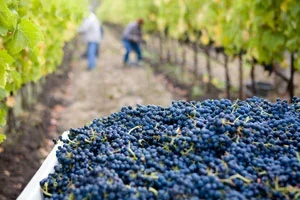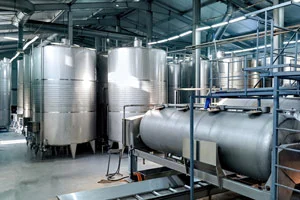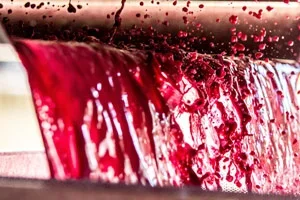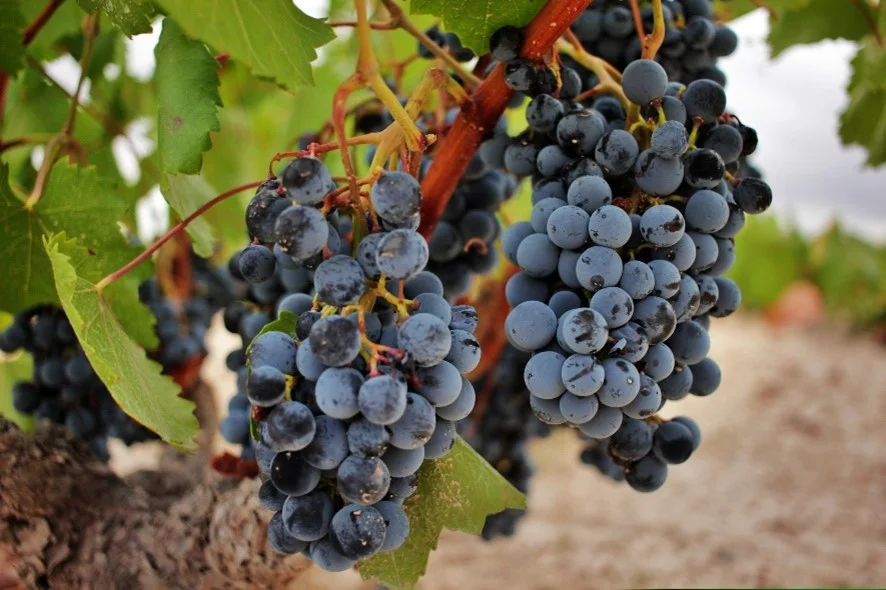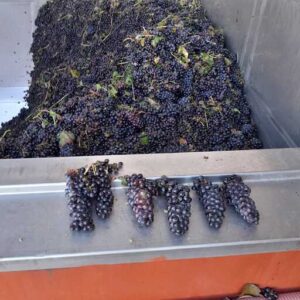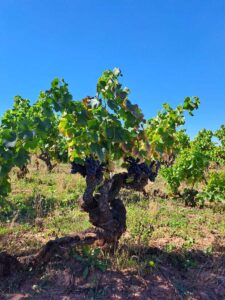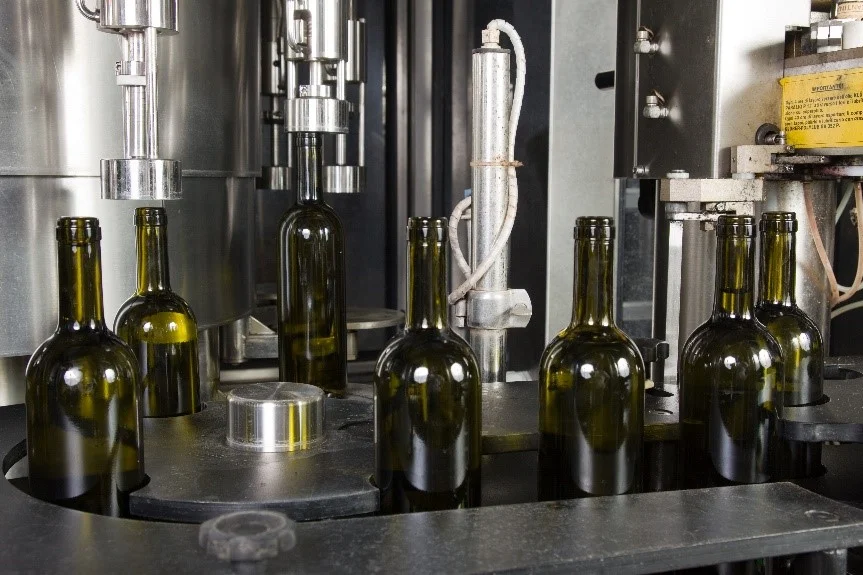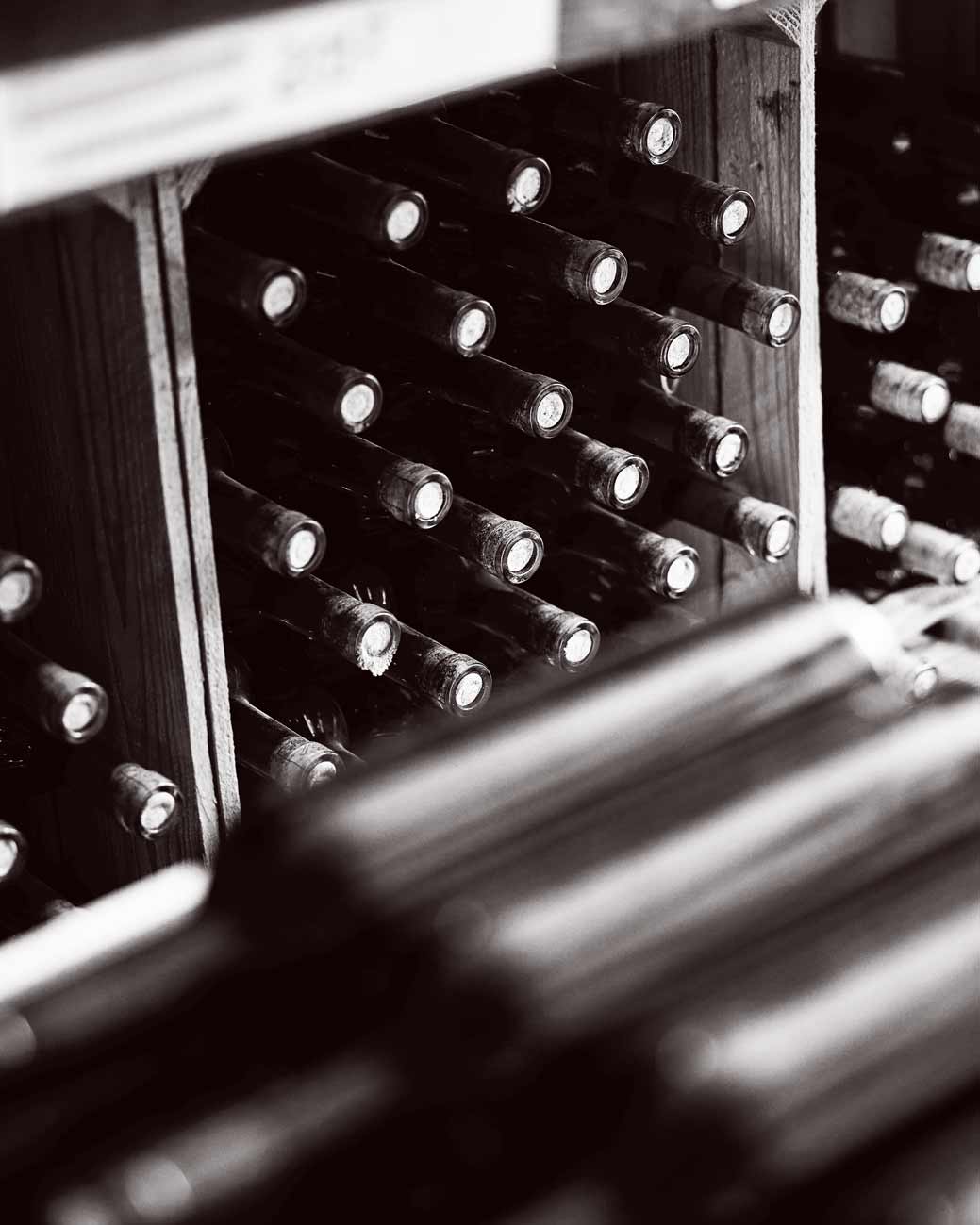As every season, winemakers look with expectation to the quality of the grapes to make their wines. As we know, weather conditions throughout the year influence the quality of grapes anywhere in the world.
At Grupo Agrovin we have first-hand knowledge of the particularities of the regions where we are present with our own delegations in Spain, France, Italy, Portugal, Romania and the United States.
In this post we tell you in general terms how the vintages have been in these areas and how the climate has influenced the evolution of the grapes.

The 2023 vintage in the United States, marked by grape ripening.
Although it is difficult to estimate the vintage in the United States due to the differences between regions, in general, the vintage in 2023 was delayed by one month and started very slowly, especially on the East Coast of California, probably the slowest vintage in the last 10 years.
As expected, the wet winter with rain until May and a significantly cooler than average month during June delayed grape ripening. As a consequence, the sugars present in the grapes are very low, resulting in wines with less alcohol.
Despite this, the quality of the grapes being harvested at this time is high and yields are above average thanks to the moderate summer temperatures that have allowed for slow phenolic ripening. Now we can only wait for the sugar to ripen so that a balance can be achieved.
The 2023 vintage in Spain, influenced by this year’s climatic complexity.
Spain has experienced different climatic trends such as episodes of long drought, stormy periods in May and June and up to four heat waves in August, which has meant that the plant has suffered high water stress during sprouting and flowering has been affected by occasional heavy rains. The heat and lack of water meant that the vintage was brought forward in the warmer areas of the peninsula, thus avoiding a greater decrease in production, as well as raisining processes that would complicate winemaking and could give rise to riper and even more evolved aromas, as well as complicating fermentation and pressing.
Despite this increasingly common climatic situation, the excellent work of the technicians during the vegetative growth and the appropriate choice of vintage time will allow the grapes to arrive at the winery in an optimal sanitary situation and in the most appropriate ripening conditions, taking into account the climatic complexity of the year.
The 2023 vintage in France, with significant differences depending on the region.
In France, the drought, especially in the southern part of the country, has had serious consequences in terms of volume, with an estimated 30% less. In other areas further north, as well as in Bordeaux, although it has not been as dry and it has rained more, the high temperatures and some diseases in the vineyard have also caused the volume to drop and the quality has not been as good as expected.
Generally speaking, in the rest of the country, despite the weather, a high quality of grapes is expected except in Bordeaux, although the volume will be lower in the whole region. The most privileged area has been Burgundy, where both quality and volume are high.
The 2023 vintage in Italy, affected by excessive rainfall followed by drought.
Italy has also suffered the consequences of the weather, very different between the northern, central and southern areas, with periods of drought and heat waves of up to 48°C and long periods of rain that have been decisive, especially when estimating the volume, which in some cases will be 50/60% lower, especially in the northern area, where the excess rainfall from January to June led to the proliferation of Peronospora, causing in some regions a significant loss of production and lower quality than in previous vintages. In central-southern Italy, the heat of the last few months has contributed to the development of pathogens, leading the vineyard to conditions of water stress with consequent dryness of the foliage and percentage losses in volume.
Despite this, the northern and central-southern areas will enjoy better quality as they have been spared from excessive rains, although it will not be like the previous grape harvest. Other regions such as Veneto, Trentino and Emilia Romagna see a productive trend in line with previous years.
Despite all this, good quality wines are being recorded throughout Italy, as the weather in August and September has been optimal for the ripening of white and red grapes.
Very concentrated grapes are expected in this vintage, with the possibility of stuck fermentation due to the treatments that had to be applied in the field. Despite the drop in production, the quality looks decent.
The 2023 vintage in Portugal, the Iberian exception.
Fortunately for Portugal, the weather crisis has not had a major impact on the current vintage in terms of grape quality and volume. The rains in the country occurred on the most important key dates for a good development of the vineyard, especially at the time before the vintage, which has been very favorable for the correct development of the grapes.
The start of the vintage was promising thanks to cool nights and warmer mornings that allowed good activity to achieve balanced musts and good potential in whites. As the vintage evolved, high temperatures and rain affected the balance of the musts in terms of acidity, but, in general terms, they expect a year with great potential, although with more heterogeneity in the ripening of the grapes depending on the different regions.
Regarding grape quality, concentrated musts and wines are expected, with a good balance between acidity and alcohol, and therefore wines with high alcohol content are not expected.
The 2023 vintage in Romania, with an early start.
As in the rest of the regions, the weather in the Romanian area has also affected the evolution of the grapes, bringing forward the grape harvest by one to two weeks compared to last year. This has meant that the sugar content, especially in white grapes, has been more difficult to achieve and that the acidity of the grapes has been lower this vintage. In the south of Romania a drop in the quantity of production has been noted, much less in 2022 where it was more noticeable, and problems have also been detected in the sanitary state of the grapes with cases of mildew.
Generally speaking, except in the southern area, in the northern and central areas of Romania, the volume of this year’s vintage has hardly been affected and they estimate a normal production, similar to that of previous years. As regards quality, despite the drought and high temperatures, in some areas the quality is very good, especially for white and rosé wines, although the musts will be difficult to clarify due to the high protein content.
General conclusions of the 2023 global vintage
What wines we will obtain from this vintage.
It is still too early to make a forecast of the type of wine we are going to obtain in each area, but due to the weather conditions in each area mentioned above, we can make a general preview that will serve as a guide to see where the new vintages will go.
Thus, in Spain, white wines of earlier varieties have been more affected by the high temperatures and are expected to be riper and more concentrated. The lower temperatures expected in the coming weeks will bring a respite for the vines, so the ripening of red and white grapes of later varieties could be expected to be more appropriate, giving rise to structured wines, but with more freshness.
Very similar is happening in France, Romania and Portugal because, although winemaking is still underway and it is too early to have musts produced, the quality of the grapes has been good and therefore the wines will also be good according to the first tastings we are doing. Italian wines are beginning to show a high alcohol content in some areas. Vinification will be more technical, requiring important clarifications and yeasts capable of continuous fermentation. In general terms, we expect slightly lower alcohol wines, while maintaining good aromas, a characteristic very similar to what is expected from American wines.
There is a solution to mitigate the effects of climate change worldwide.
That climate change affects the evolution of the vine and therefore the quality of the grape is more than demonstrated anywhere in the world and if there is a solution to alleviate the effects this has on the quality of the wine, Grupo Agrovin has it thanks to its Ultrawine Perseo system.
The climatic situation is showing us that technology is essential for the production of quality wines from climate change grapes. Harvesting takes place in situations of heat waves with high temperatures that must be controlled to avoid fermentation stoppages or to bring forward the time of harvest to obtain wines with greater freshness.
Ultrawine Perseo is a unique technology that minimizes the imbalance between the technological and phenolic maturity of the grape, allowing us to address some of the consequences of climate change on winemaking. Its effect on the grapes allows us to obtain wines with a lower alcohol content and freshness, as they are harvested early, without this leading to a lower extraction of phenolic compounds, obtaining wines with an optimal content of color, structure and aromas.
In view of the forecast of wines with high alcohol content, what products can be used to solve this problem?
The high temperatures, together with the probable alcoholic strength expected, force us to pay special attention to the fermentations. Controlling the fermentation temperature is essential, since yeasts may not be able to withstand the temperature reached during the exothermic process of alcoholic fermentation. The same importance should be given to the choice of yeast and the nutritional protocol to be followed.
Other essential oenological products for the production of wines for this season
The choice of the right yeast is of vital importance in the case of red wines with high probable alcohol content:
– Working at a wide range of temperatures.
– High resistance to ethanol to ensure safe fermentation ends
– Increased oiliness to compensate for the dryness produced by the high ethanol content.
– Low alcoholic yield that allows less sugars to be broken down.
Within the Viniferm range we can find yeasts adapted to these conditions for the production of red wines with high probable alcoholic content, being particularly recommended: Viniferm ELITE, Viniferm 3D, Viniferm RVA or Viniferm CARÁCTER.
Regarding the nutritional protocol, the use of organic nutrients during fermentation makes it possible to control fermentation kinetics and, therefore, thermal gradients. In these cases, we recommend the application of nutrients that have a high NFA contribution in the form of NOPA (deficient in climate change grapes) such as Actimax Natura or Actimax Varietal. On the other hand, we can also increase the ethanol tolerance of the yeast by strengthening its membrane with the use of Actimax VIT, and, especially important in the case of yeast multipliers, Actimax Regrowth.
Another winemaking strategy demonstrated in recent years is to obtain wines with a lower alcohol content by using non-Saccharomyces yeasts in combination with Saccharomyces. In this case, the Viniferm Ns range of yeasts (Td or Chance) is a perfect and economical alternative.
Agrovin Solutions for this vintage 2023
Grupo Agrovin is 100% committed to the winemaking of the future and to the best way to combat the effects of the climate crisis on grapes, and that is why they invest all their efforts in the area of biotechnology, where they are leaders, thanks to the Viniferm range with two reference products. On the one hand, Vineferm NSTD, a Torulaspora delbrueckii yeast selected for its aptitude in the sensory improvement of wines, and Viniferm Direct, Saccharomyces cerevisiae yeast for direct inoculation to enhance the varietal profile, both highly effective, to which Viniferm NS Chance is now added to complete the range.
On the other hand, in situations where the grapes have been harvested under conditions of berry dehydration, it is interesting to work with enzymes to improve press yields. For this purpose, the Enozym and Enovin range of enzymes is adapted to different protocols and types of wine.
Also, for those white grapes that have been more affected by high temperatures and may be “devastated”, consider options that help reduce CI and the risk of oxidation through the elimination of polyphenols, such as Proveget Premium, which is also suitable for vegan and organic wines according to European regulations.
Has your vintage been affected by the weather?
If you need solutions and advice, please contact us through our form.
If you need to work on wine refinement, we invite you to visit our refinement page and our Sensations Map Agrovin.
